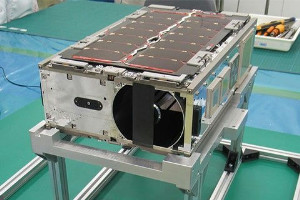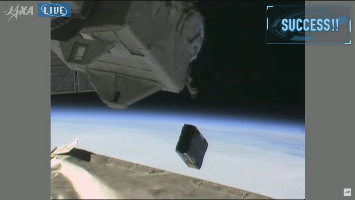| Spacecraft | ONGLAISAT (ONboard Globe-Looking And Imaging Satellite, NSPO-01) |
|---|---|
| Spacecraft type | CubeSat |
| Units or mass | 6U |
| Status | Reentry 2025-03-04. Was operational? (Official press release on 2024-12-10 but SatNOGS has not received as of 2024-12-28) |
| Launched | 2024-11-05 |
| NORAD ID | 62299 |
| Deployer | J-SSOD (JEM Small Satellite Orbital Deployer) |
| Launcher | Falcon 9 (CRS-31) |
| Deployment | Deployed from ISS on 2024-12-09 |
| Organisation | ArkEdge Space |
| Institution | Company |
| Entity | Commercial |
| Nation | Japan |
| Manufacturer | AIVT by ArkEdge Space |
| Operator | ArkEdge Space |
| Launch brokerer | Space BD |
| Partners | University of Tokyo, National Space Organization, Taiwan Space Agency (TASA) |
| Oneliner |
Demonstrate low-cost Earth observation satellite. Equipped with TASA’s newly developed optical observation components |
| Description |
Realizes a low-cost earth observation by attaching the optical observation device developed by NSPO to the satellite with the high attitude control technology developed by the Nakasuka laboratory. The low-cost and short-term satellite development is realized by utilizing consumer products. It is expected to expand its use and business in a wide range of efficient and frequent disaster monitoring and environmental monitoring. |
| Results |
|
| Sources | [1] [2] [3] [4] [5] |
| Photo sources | [1] [2] [3] |
| Space photos | 
|
| On the same launch |
Last modified: 2025-04-25



